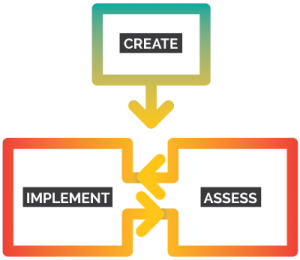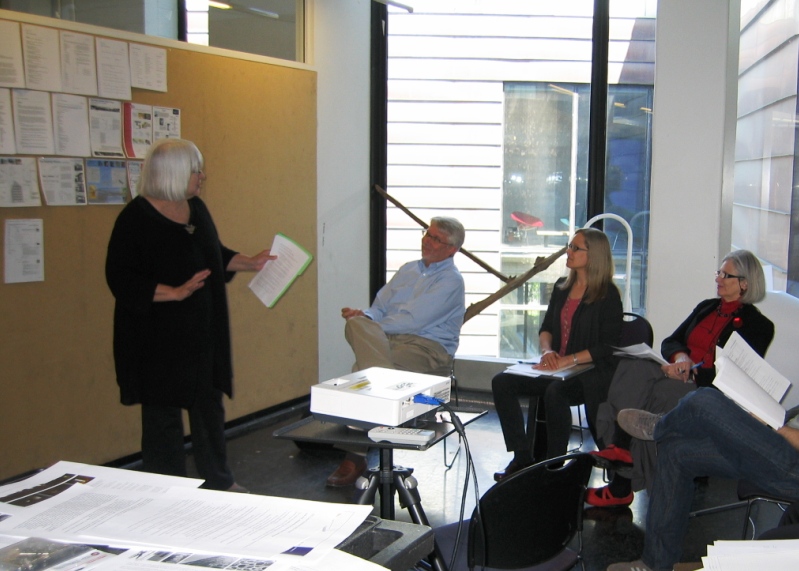
WEC Model
The WEC model offers a faculty-driven approach to supporting effective and relevant writing and writing instruction within an undergraduate curriculum. The model is founded on the following principles, gleaned from three decades of research and experience:
- Writing can be flexibly defined as an articulation of thinking, an act of choosing among an array of modes or forms, only some of which involve words.
- Writing ability is continually developed rather than mastered.
- Because writing is instrumental to learning, it follows that writing instruction is the shared responsibility of content experts in all academic disciplines.
- The incorporation of writing into content instruction can be most meaningfully achieved when those who teach are provided multiple opportunities to articulate, interrogate, and communicate their assumptions and expectations.
- Those who infuse writing instruction into their teaching require support.
WEC Process
In a nutshell, WEC engages undergraduate departments in an ongoing, faculty-driven process of creating, implementing, and assessing Undergraduate Writing Plans. Ongoing assessments indicate that implementing the WEC model can trigger positive shifts in writing instruction and in the rate at which student writing meets local faculty expectations.
Creating Writing Plans
Writing Plans are developed in a series of lively meetings with departmental faculty and specialists in writing pedagogy and assessment. These meetings allow faculty participants opportunities to think collaboratively about the roles played by writing in their fields, attributes they look for in student writing, and ways that writing instruction can be optimally situated in their curricula. Finally they strategize, making plans for locally-relevant instructional interventions and determining forms of needed support.
Throughout these discussions, faculty consider various forms of locally collected data related to writing and writing instruction. These include stakeholder surveys, locally drawn samples of undergraduate writing and writing assignments, departmental curricular schemes, and direct writing assessments.
The Writing Plans that result from these meetings articulate relevant writing expectations and outline plans for curricular integration of writing instruction, writing assessment, and instructional support. Plan drafts are vetted by local faculty, and subsequently approved by deans and the University’s Campus Writing Board (a subcommittee of the faculty senate).
Implementing Writing Plans
Approved Writing Plans are implemented for 1-3 academic years. Because Plans are unique to the units and faculty groups creating them, implementation efforts vary. Examples have included the following:
- posting faculty generated writing expectations on faculty-facing and student-facing sites and systematically incorporating agreed-upon writing criteria into writing assignments and grading schemes
- co-facilitating instructional consultations and customized workshops
- convening writing-oriented discussions between undergraduate students and panels of field professionals
- conducting additional curricular research and revising course sequences and capstone-level courses and writing projects
- incorporating brief interactive writing workshops into select undergraduate courses
- sending faculty teams to campus-wide seminars focused on writing instruction
Assessing Writing Plans
Writing Plans are approved by the Campus Writing Board, a subcommittee of the Faculty Senate. Unit faculty members, in partnership with the WEC team, conduct regular direct and indirect assessment to gauge Writing Plan effects on student writing, curricular structures, and instructional practices. Direct assessment practices include triennial panel rating of student writing against faculty-generated criteria. Results from all assessments are interpreted and discussed by faculty and used to guide next-edition writing plans.


